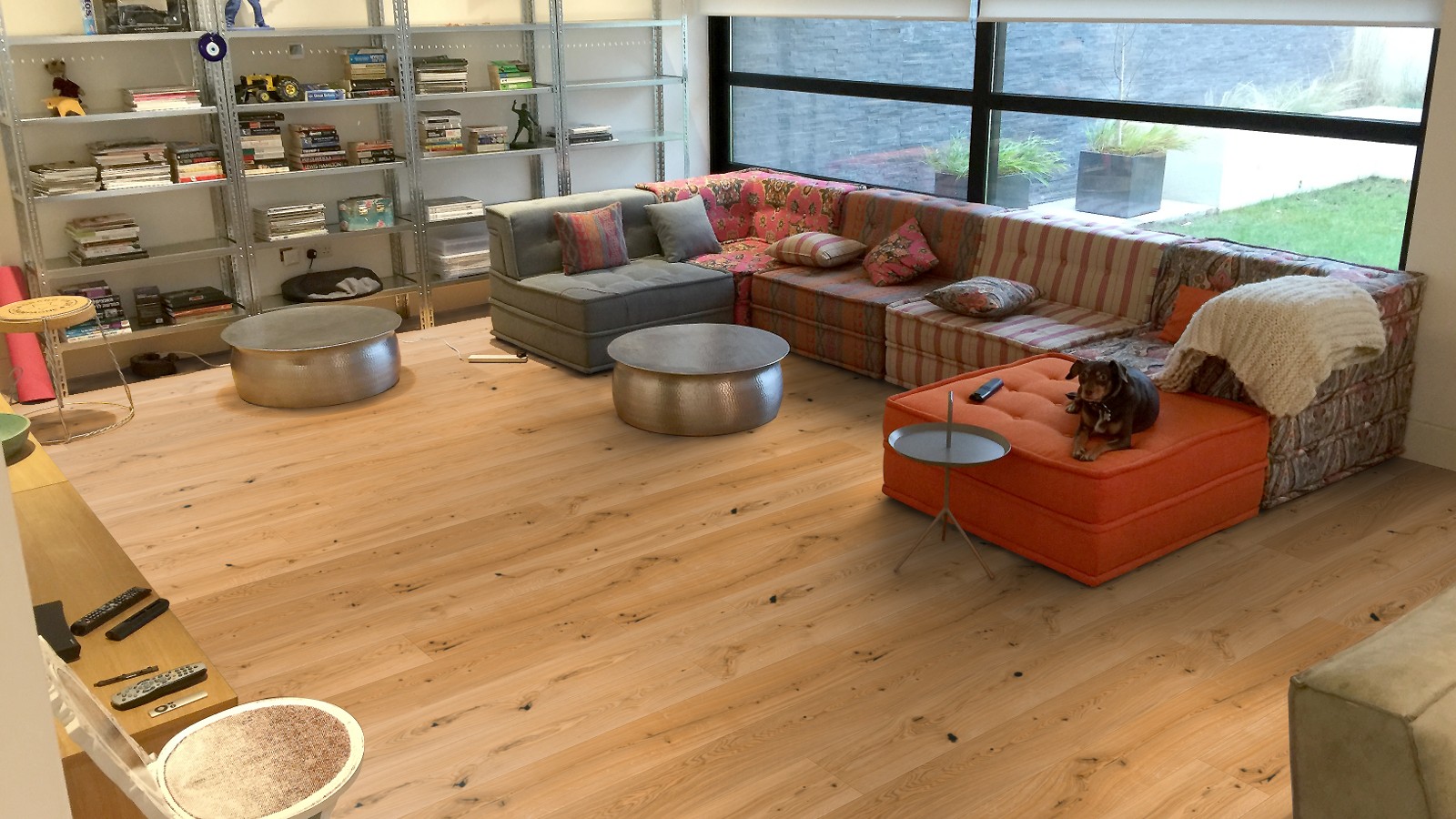It’s hard to resist the timeless appeal of a solid wood floor. If you are considering installing one (and we wouldn’t blame you!), you might be grappling with a plethora of types and colours to choose from. While these are important aspects, there is another equally important element that is often overlooked till the last minute – the finish of the floor.
Deciding on the right kind of finish is a deal-breaker of sorts. Therefore, it is always better to thoroughly consider your options before the final installation. Here’s a basic guide to the two most popular and common finishing choices – UV Lacquered and Oiled.
Bring out the shine with UV Lacquered
In layman’s terms, UV Lacquer can be likened to varnish – and acts as a hardwearing layer on top of the wood surface. This finish is cured by high-intensity UV rays to prevent the wood from fading with extended exposure to sunlight. For those of you who wish for a high gloss wood floor with a sheen on it, lacquered is the way to go. With advancements in technology, UV Lacquered also comes in matt finishes, but they still lend a bit of shine to the floor.
Pros:
- This type of finish makes the floor more wear-resistant, as it sits on top of the wood floor like a protective layer. Perfect for high-traffic areas that see a lot of footfall.
- While wooden floors are not particularly waterproof, UV Lacquered finish helps make your floors less prone to water damage. Since it acts as a film or barrier between the surface of the floor and its core, small amounts of splashes and spills will not penetrate and damage the floorboards. But it’s imperative to wipe off the spill right away.
- On an everyday basis, UV Lacquered floors are much easier to clean and maintain when compared to oiled floors. You only need some water and a flat mop.
- You can choose how glossy your floors can be – high gloss, semi-matt or matt, depending on your preference.
- This type of finish is anti-fade and does not lose its sheen when exposed to sun rays.
Cons:
- Due to the fact that it does not penetrate into the wood and sits on top of it, UV Lacquered floors become susceptible to scratches and scuffs. If a scratch does happen, it is much more noticeable than on an oiled surface.
- If damage does occur, it’s harder to fix – requiring sanding down large areas and then reapplying a lacquer.
- Since it’s a shiny surface, the smallest dust particles are exposed easily on these type of finishes.
When it comes to UV Lacquered finishes, it’s really important to invest in good doormats and sweep or vacuum regularly.
Keep it natural with Oils
This type of finish has been around for thousands of years, and rightfully so. If you wish to retain the authenticity of the wood and keep its natural look intact, an oil finish is what you need. In this case, a special natural oil, like Linseed or Tung oil is applied to the top of the wood floor. The oil is then allowed to soak in and bond with the floor, providing a deeper defence against the elements.
Pros:
- With its matt appearance, oiled floors look and feel like the real thing. You can feel every grain, knot and the warmth of real wood, unlike on the shiny veneer of lacquer. Since it appears natural, the wood floors also age better.
- The possibility of spot repair is the greatest advantage of oiled floors. If there is serious damage, all you need to do is sand down just that area and reapply the oil. This saves you both time and money.
- Oiled floors are antistatic and don’t accumulate as much dust as lacquered floors.
- Since the finish is matt and natural, minor scratches and scuffs are barely visible.
- The best thing about oil finish is that it goes deep into the heart of the wood. This means that the wood is protected all over, from the surface to the core.
Cons:
- This finish can be high maintenance. In order to clean and protect oiled floors, you need to use special products at least once a month. You also need to apply oil again every 6 months to ensure the surface doesn’t wear down.
In conclusion
What you choose ultimately depends on how you want your wooden floors to look and perform. A lot of other factors need to be considered too, such as – Is it easy to apply? How much drying time does it need? What is the protection level against the elements? What is the short-term and long-term expense of these options?
It is always better to think through every aspect thoroughly so you can make an informed decision. We are, of course, always around to help should you need further assistance.




